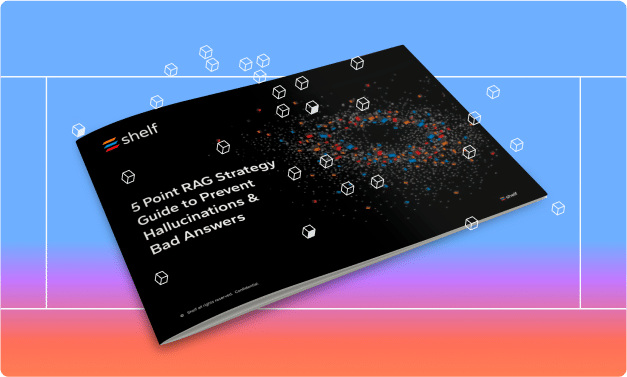Data modeling is an important practice of modern data management. It involves creating abstract representations of data to better understand and organize your information. This lets you design databases and other data systems that are efficient, reliable, and scalable.
What is Data Modeling?
Data modeling is the process of creating a visual representation of a system’s data. It involves defining and structuring data elements and the relationships between them. This process helps you understand and organize your data so it can be effectively stored, accessed, and used.
In data modeling, diagrams are used to represent data structures and relationships. By defining data elements and their organization, you can better understand how data is related and organized within your system. This understanding is key for effective data management, as it ensures data accuracy, consistency, and accessibility.
Data modeling is a foundational practice for anyone working with data. It lays the groundwork for data management and analysis, which enables better decision-making.
The Benefits of Data Modeling
By creating structured representations of data, you can unlock several significant benefits that enhance your organization’s data management capabilities and overall performance.
Improved Data Quality
Data modeling ensures data is accurate, consistent, and reliable. By defining data elements and relationships, you enforce data integrity, reducing errors and inconsistencies.
Enhanced Communication
A well-structured data model provides a common language between stakeholders and technical teams, improving collaboration and shared understanding of data requirements.
Better Data Integration
Data modeling creates a unified view of data, facilitating the integration of disparate data sets essential for comprehensive data warehouses and business intelligence systems.
Increased Efficiency
Clear data models streamline data management processes, reducing development time and effort. They enable faster data retrieval and processing, enhancing system performance.
Scalability and Flexibility
Data models help design scalable and adaptable systems. Understanding data structures and relationships allows for easier extension and modification of data systems.
Risk Mitigation
Data modeling identifies potential issues early in development. Understanding data requirements and constraints allows you to address problems proactively, reducing the risk of errors and system failures.
Regulatory Compliance
Accurate data models ensure compliance with regulatory requirements. Documenting data sources, transformations, and usage helps demonstrate compliance with data protection and privacy regulations.
Strategic Decision Making
High-quality data models support data analytics and business intelligence, providing deeper insights into operations and enabling more informed strategic decisions, leading to better outcomes.

The Different Types of Data Models
Data models come in various forms, each serving a specific purpose and catering to different needs. Understanding the different types of data models helps you choose the right one for your system and ensures efficient data management.
1. Conceptual Data Model
The conceptual data model provides a high-level overview of the organizational data. It focuses on the entities, their attributes, and the relationships between them without going into technical details. This model is used to outline the overall structure of the data and to communicate with stakeholders who may not have technical expertise.
2. Logical Data Model
The logical data model focuses on the structure of the data without considering how it will be physically implemented. It includes detailed descriptions of the entities, attributes, and relationships, as well as the primary and foreign keys. This model serves as a blueprint for developing the physical data model and helps in ensuring data integrity and consistency.
3. Physical Data Model
The physical data model describes how the data will be stored in the database. It includes specific details about the database schema, such as tables, columns, data types, and constraints. This model is key for database administrators and developers as it guides the actual implementation and optimization of the database.
4. Hierarchical Data Model
The hierarchical data model organizes data in a tree-like structure with parent-child relationships. Each parent entity can have multiple child entities, but each child entity has only one parent. This model is suitable for applications with a clear hierarchical structure, such as organizational charts or file systems.
5. Network Data Model
The network data model is similar to the hierarchical model but allows more complex relationships. In this model, a child entity can have multiple parent entities, creating a graph structure. It is useful for representing many-to-many relationships and more intricate data connections.
6. Relational Data Model
The relational data model organizes data into tables (relations) consisting of rows and columns. Each table represents an entity, and relationships between tables are established through foreign keys. This model is widely used due to its simplicity, flexibility, and ease of use with SQL databases.
7. Object-Oriented Data Model
The object-oriented data model integrates object-oriented programming principles with data modeling. It represents data as objects, similar to how they are used in programming languages like Java or C++. This model is beneficial for applications that require a close alignment between the data model and the application code.
Data Modeling Techniques
Data modeling techniques are methodologies used to create and structure data models. Understanding the different techniques allows you to choose the most appropriate approach for your data management goals.
Entity-Relationship (ER) Modeling
Entity-Relationship modeling is a popular technique used to design relational databases. It involves identifying entities (objects or concepts) and their relationships. ER diagrams use symbols to represent entities, attributes, and relationships, providing a clear visual representation of the data structure.
Key Elements:
- Entities: Objects or concepts, such as customers or products.
- Attributes: Characteristics or properties of entities, such as name or price.
- Relationships: Connections between entities, such as “purchases” linking customers and products.
Unified Modeling Language (UML)
Unified Modeling Language (UML) is a versatile modeling language used for designing and visualizing complex software systems, including databases. UML diagrams represent various aspects of the system, such as structure and behavior, making it suitable for object-oriented data models.
Key Elements:
- Class Diagrams: Represent the static structure of the system, including classes, attributes, and relationships.
- Use Case Diagrams: Describe system functionality from the user’s perspective.
- Sequence Diagrams: Show interactions between system components over time.
Data Flow Diagrams (DFD)
Data Flow Diagrams (DFD) are used to visualize the flow of data within a system. They illustrate how data moves from one process to another and how it is stored and accessed. DFDs are useful for understanding data processes and identifying potential bottlenecks or inefficiencies.
Key Elements:
- Processes: Activities that transform data, such as “process order.”
- Data Stores: Repositories where data is stored, such as databases or files.
- Data Flows: Movement of data between processes, data stores, and external entities.
- External Entities: Sources or destinations of data outside the system, such as users or other systems.
Normalization
Normalization is a technique used to organize database tables to reduce data redundancy and improve data integrity. It involves dividing a database into smaller, related tables and defining relationships between them. The goal is to ensure that each table contains only related data and that data dependencies are logical.
Normal Forms:
- First Normal Form (1NF): Ensures that each column contains atomic (indivisible) values.
- Second Normal Form (2NF): Ensures that all non-key attributes are fully dependent on the primary key.
- Third Normal Form (3NF): Ensures that all attributes are only dependent on the primary key.
Dimensional Modeling
Dimensional modeling is used in data warehousing and business intelligence to design data marts and data warehouses. It organizes data into fact tables and dimension tables, enabling efficient querying and reporting. Dimensional models support analytical processes by providing a simple and intuitive data structure.
Key Elements:
- Fact Tables: Store quantitative data, such as sales or revenue.
- Dimension Tables: Store descriptive data, such as time, location, or product details.
- Star Schema: A simple structure with a central fact table connected to multiple dimension tables.
- Snowflake Schema: A more complex structure where dimension tables are normalized into multiple related tables.
Object-Relational Mapping (ORM)
Object-Relational Mapping (ORM) is a technique that bridges the gap between object-oriented programming and relational databases. ORM tools automatically map objects in code to database tables, simplifying data access and manipulation for developers.
Key Elements:
- Objects: Instances of classes in code.
- Mappings: Definitions that connect object properties to database columns.
- ORM Tools: Software libraries that facilitate the mapping process, such as Hibernate or Entity Framework.
Data Modeling Tools
Choosing the right data modeling tool is essential to efficiently designing, managing, and visualizing your data models. Here are some popular data modeling tools, along with their benefits. Each of these data modeling tools offers unique benefits that cater to different needs and preferences. By selecting the right tool, you can streamline your data modeling processes, enhance collaboration, and ensure the accuracy and consistency of your data models.
ER/Studio
ER/Studio is a comprehensive data modeling tool designed for enterprise data architects and database professionals. It supports logical, physical, and data warehouse modeling.
Benefits:
- Collaboration: Facilitates teamwork with version control and model repository features.
- Cross-Platform Support: Compatible with various databases like SQL Server, Oracle, and MySQL.
- Business Glossary: Integrates a glossary for maintaining consistent data definitions.
- Impact Analysis: Identifies the potential impact of changes in data models on the overall system.
erwin Data Modeler
erwin Data Modeler is a powerful tool that supports conceptual, logical, and physical data modeling. It is widely used for data governance, management, and integration.
Benefits:
- Intuitive interface that simplifies model creation and management.
- Automates complex tasks, reducing errors and saving time.
- Seamlessly integrates with various databases and data management tools.
- Ensures data quality and compliance with built-in governance features.
IBM InfoSphere Data Architect
IBM InfoSphere Data Architect is a robust tool for designing and deploying enterprise data architectures. It supports relational, dimensional, and XML data modeling.
Benefits:
- Offers end-to-end data management capabilities, from design to deployment.
- Integrates with other IBM tools and platforms, enhancing overall data management.
- Provides advanced analysis features like impact analysis and data lineage.
- Scalable to handle large and complex data environments.
Microsoft Visio
Microsoft Visio is a versatile diagramming tool that can be used for data modeling. It supports creating ER diagrams and integrating with various databases.
Benefits:
- User-friendly interface with drag-and-drop functionality.
- Seamlessly integrates with other Microsoft Office tools.
- Offers a wide range of templates and stencils for quick model creation.
- Supports real-time collaboration and sharing of diagrams.
Oracle SQL Developer Data Modeler
Oracle SQL Developer Data Modeler is a free tool provided by Oracle for designing and managing database models. It supports logical, relational, and physical modeling.
Benefits:
- Free tool with robust features for Oracle database environments.
- Tight integration with Oracle SQL Developer and other Oracle tools.
- Supports industry-standard data modeling practices.
- Large user community and extensive documentation for support.
Toad Data Modeler
Toad Data Modeler is a versatile tool for creating and managing data models. It supports various databases, including SQL Server, Oracle, and MySQL.
Benefits:
- Compatible with multiple database platforms.
- Automates repetitive tasks, improving productivity and accuracy.
- Highly customizable to fit specific project needs.
- Offers advanced visualization features for better understanding of data models.
Lucidchart
Lucidchart is a cloud-based diagramming tool that supports data modeling and ER diagram creation. It is known for its simplicity and collaboration features.
Benefits:
- Accessible from anywhere with an internet connection.
- Real-time collaboration and sharing capabilities.
- Intuitive interface with easy-to-use tools.
- Integrates with popular platforms like Google Drive, Slack, and Atlassian.

Best Practices in Data Modeling
By following these best practices, you can create data models that are efficient, scalable, and aligned with your objectives. This will enable you to derive maximum value from your data.
Understand Your Requirements
Before you start modeling data, ensure you have a thorough understanding of your requirements. This involves collaborating with stakeholders to gather detailed information about the data needs, usage scenarios, and expected outcomes.
Use Standard Notations
Using standard notations and conventions makes your data models easier to understand and maintain. Common notations include Entity-Relationship (ER) diagrams and Unified Modeling Language (UML). Ensure that diagrams are clear and easily interpretable by all stakeholders.
Normalize Data
Normalization helps reduce data redundancy and improve data integrity. It involves organizing data into tables and defining relationships to minimize duplication and dependency issues.
Denormalize for Performance
While normalization is essential for data integrity, denormalization can improve performance in specific scenarios, such as read-heavy applications. Denormalization involves combining tables or adding redundant data to reduce the number of joins required for queries. Strive for a balance between normalization and denormalization to meet performance and data integrity needs.
Define Clear Relationships
Clearly define relationships between entities to ensure data consistency and integrity. Use primary keys and foreign keys to establish these relationships.
- Primary Keys: Ensure each table has a primary key that uniquely identifies each record.
- Foreign Keys: Use foreign keys to enforce referential integrity between related tables.
Use Surrogate Keys
Surrogate keys are artificial keys used as unique identifiers for records, rather than natural keys derived from the data. Surrogate keys are usually simpler and shorter than natural keys, making them easier to manage, and these remain stable even if the underlying data changes.
Document Your Data Models
Proper documentation is key to maintaining and understanding data models. It helps new team members quickly grasp the data structure and ensures consistency over time.
Provide detailed descriptions of entities, attributes, and relationships. Document the rules and logic associated with the data model. Include clear and comprehensive diagrams that visually represent the data model.
Regularly Review and Update Models
Data models should evolve with your needs. Regularly review and update your data models to ensure they remain aligned with current requirements. Conduct periodic reviews of your data models to identify areas for improvement.
Optimize for Performance
Consider performance optimization techniques when designing your data models. This includes indexing, partitioning, and optimizing query performance.
- Indexing: Use indexes to speed up data retrieval and improve query performance.
- Partitioning: Partition large tables to enhance performance and manageability.
- Query Optimization: Design your data model to minimize expensive joins and complex queries.
Ensure Data Security and Privacy
Incorporate data security and privacy considerations into your data model. This includes defining access controls, encryption, and compliance with data protection regulations.
Challenges in Data Modeling
Data modeling involves several challenges that can affect the reliability and effectiveness of your data systems. Addressing these challenges can help you create robust, scalable, and efficient data models that meet your needs.
- Handling Complex Data Structures: Integrating diverse data types into a cohesive model requires advanced techniques and careful planning.
- Ensuring Data Quality: Continuous efforts in data cleansing and validation to correct errors and ensure accuracy.
- Managing Data Redundancy: Balancing normalization and denormalization to maintain data integrity and performance.
- Aligning with Evolving Requirements: Adapting the data model to changing needs through regular stakeholder communication and designing for flexibility.
- Handling Large and Complex Datasets: Using techniques like partitioning and indexing to improve performance and manageability.
- Ensuring Data Security and Privacy: Implementing robust access controls and ensuring compliance with regulations like GDPR or HIPAA.
- Integrating with Existing Systems: Ensuring compatibility and seamless data flow through careful planning and execution.
- Maintaining Performance: Employing query optimization and efficient resource management to handle large-scale data operations.
- Documentation and Knowledge Transfer: Providing comprehensive documentation and training resources for long-term maintainability.
- Balancing Flexibility and Standardization: Establishing consistent data modeling standards while designing for adaptability.
The Foundation of Your Data Systems
Data modeling is a fundamental practice for creating efficient, reliable, and scalable data systems. It provides the structural foundation needed to ensure data quality, facilitate integration, and support decision-making. By understanding and applying different data modeling techniques, tools, and best practices, you can design data architectures that meet your needs and adapt to future changes.




